|
|
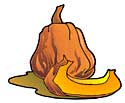 Winter Squash and Other Worldly Gourds Winter Squash and Other Worldly Gourds
by Marjorie Dorfman
How is winter squash different from summer squash and why don’t either of them have anything to do with rackets and tennis courts? What common problems do all squashes have? These and other sporting questions will be addressed below. Read on, no matter what your score may be.
|
I will never give in to lachanophobia. – Old Dorfman family saying.
Acorn Squash, aka Table Queen and Des Moines, dates back to 4,000 BC. It is indigenous to the Americas and is thought to be the very first food cultivated by Native Americans. Along with corn and beans, squash forms an Indian triad of the three most important food staples. The word "squash" comes from a Massachusetts Indian word, askutasquash, meaning eaten raw or uncooked, which is the way native Americans most likely ate it. Today, however, we generally think of it as a very versatile cooked vegetable. It can be fried, boiled, pickled, steamed, candied, dried, baked, made into pies or bread or eaten raw in salads. The flowers are also edible, and are considered a delicacy by many chefs. The seeds can be roasted and seasoned for a nutritious snack. Squash seeds have been found in ancient Mexico as well, dating back to somewhere between 9000 and 4,000 BC.
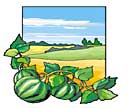 The first European settlers thought squash to be a type of melon, as they had never seen them before. The term "acorn squash" first appeared in print in 1937. The squash family (Cucurbitaceae) includes pumpkins, winter and summer squash, which are really edible gourds. There are many varieties with a wide range of colors and textures. Winter squash is known for its tough outer shell, which can be bumpy or smooth, thin or thick and rock hard with a wide array of coloration, ranging from red to orange to yellow, white, green, blue, black and even gray (a true artist’s palette of primary and secondary colors). They can be rounded, cylindrical, conical, comical, pear-shaped, horned, strange and even stranger. (I once read about an acorn squash somewhere in some museum that resembles the profile of Richard Nixon!) The first European settlers thought squash to be a type of melon, as they had never seen them before. The term "acorn squash" first appeared in print in 1937. The squash family (Cucurbitaceae) includes pumpkins, winter and summer squash, which are really edible gourds. There are many varieties with a wide range of colors and textures. Winter squash is known for its tough outer shell, which can be bumpy or smooth, thin or thick and rock hard with a wide array of coloration, ranging from red to orange to yellow, white, green, blue, black and even gray (a true artist’s palette of primary and secondary colors). They can be rounded, cylindrical, conical, comical, pear-shaped, horned, strange and even stranger. (I once read about an acorn squash somewhere in some museum that resembles the profile of Richard Nixon!)
 Winter squash is a vegetable of some contradiction, for it is a warm season vegetable that can be grown in most parts of the country. It is, despite the hardness of its outer coating, a very tender vegetable. The seeds do not germinate in cold soil and the seedlings are often injured by frost. It can only be planted when all danger of frost has passed and the soil is thoroughly warmed. Spaghetti, acorn, sugar loaf, sweet dumpling, delicata and butternut squashes are familiar winter varieties that are prized for their flavorful flesh. They differ from summer squash in that they are all harvested and eaten while they are mature fruits, that is, when the seeds have ripened and the skin has hardened into a tough rind. At this juncture, most varieties of squash can be stored for use throughout the winter months. Winter squash is a vegetable of some contradiction, for it is a warm season vegetable that can be grown in most parts of the country. It is, despite the hardness of its outer coating, a very tender vegetable. The seeds do not germinate in cold soil and the seedlings are often injured by frost. It can only be planted when all danger of frost has passed and the soil is thoroughly warmed. Spaghetti, acorn, sugar loaf, sweet dumpling, delicata and butternut squashes are familiar winter varieties that are prized for their flavorful flesh. They differ from summer squash in that they are all harvested and eaten while they are mature fruits, that is, when the seeds have ripened and the skin has hardened into a tough rind. At this juncture, most varieties of squash can be stored for use throughout the winter months.
Acorn squash is by far the most popular of all the winter gourds. Like its brothers and sisters, it has the almost contradictory qualities of an inedible hard, thin outer layer and a firm, sweet flesh. It tastes sweeter than summer squash with a distinct nut-like flavor. Its ribbed acorn shape is responsible for its famous nickname. The growing period is longer than that of summer squash, giving it plenty of time to soak up the sun’s natural sweetness. They come in green, orange and white and although they are available in many areas all year round, its prime season is early fall through winter.
The average acorn squash weighs from one to three pounds. Anything larger usually indicates a dry and stringy vegetable. In appearance it should be heavy with smooth, dull skin and absolutely no soft spots. Skin that is shiny is usually a sign that the squash was picked before it had a chance to mature, unless the producer has applied wax to the surface. There should be some skin that has orange traces, which indicates maturity. Too much orange, however is a true sign of an overripe squash. A good balance of coloration between green and orange is the best choice.
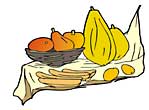
There are many varieties of squash, including banana, buttercup, butternut, calabash, spaghetti, delicata, golden nugget, Hubbard, kabocha (Japanese), sweet dumpling and turban. The banana and Hubbard varieties are so large that grocers usually cut them into smaller chunks before putting them out for sale. The buttercup has sweet and creamy orange flesh, but tends to be a bit dry. Butternut squash is sweet flavored, easy to use and small enough to serve a normal size family without leftovers. The rind is also thin enough to peel with a vegetable peeler. Delicata and sweet potato are interchangeable, with a taste like sweet potatoes. Golden nugget is hard to cut because of its thick rind, although if you can get past that, it does have a pleasant flavor.
All squashes share similar problems. Cucumber beetles attack seedlings, vines and both mature and immature fruits. They can be controlled with a weekly insecticide that is applied either as a spray or dust. This is usually a problem in early September. Squash bugs too attack vines as the fruit is beginning to set and increase in numbers throughout the summer months. These pests can severely damage maturing fruit and are best treated with insecticide before they have a chance to reproduce rapidly and cause even more damage.
Squash is an excellent source of beta-carotene, potassium, Vitamin C and folacin. It is one of the most versatile vegetables in the world and can be prepared in a thousand ways. It can be halved, seeded and baked at 375 degrees for 45 minutes to one hour. Serve it with a tablespoon of brown sugar or maple syrup and a pat of butter in the cavity. Or scoop out the flesh and mash. To microwave, pierce the entire squash in several places. Cook on high for 8-12 minutes, or until tender. Turn over partway through cooking process. Let stand for 5 or 10 minutes. Cut in half, remove seeds and serve, or scoop out flesh and mash. Winter squashes are also wonderful in creamed soups and like pumpkin, can be combined with cinnamon, nutmeg and cloves to make a squash pie. Many South American cooks bake a beef stew inside a seeded squash, which acts as both a cooking vessel and an ingredient of the dish.
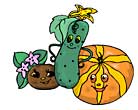
So thumbs up to squash when it comes to good nutrition, taste and versatility. Look on the bright side. You have to eat some vegetables in your lifetime. You can enjoy this one with the added advantage of not needing either a tennis court or a racquet!
Did you know . . .?
|
|
|
|
 |
|
|
 "Garlick maketh a man wynke, drynke, and stynke." "Garlick maketh a man wynke, drynke, and stynke."
Thomas Nash
16th Century poet
"I come from a family where gravy is considered a beverage."
Erma Bombeck
|
Don't miss these excellent books:
The Compleat Squash
A Passionate Grower's Guide to Pumpkins, Squashes, and Gourds
by Amy Goldman
Victor Schrager (Photographer)
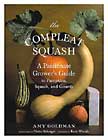
Part gardening book, part "encounters with remarkable vegetables," this book unearths the personalities – yes, personalities – of the pumpkin and the squash. They are members in good standing in the horticultural hall of fame, and Goldman lovingly ponders their case histories and culinary merits both with common and uncommon varieties.
Growing Squashes and Pumpkins
by Richard Bird
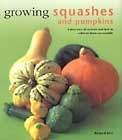
This useful guide lays out the different varieties of squashes and pumpkins and shows them in glorious full color. Part of his "Kitchen Garden" series, garden expert Richard Bird shows you how to create a variety of delightfully decorative and productive plots.
|

Click for a printer friendly version of this article.
|
|